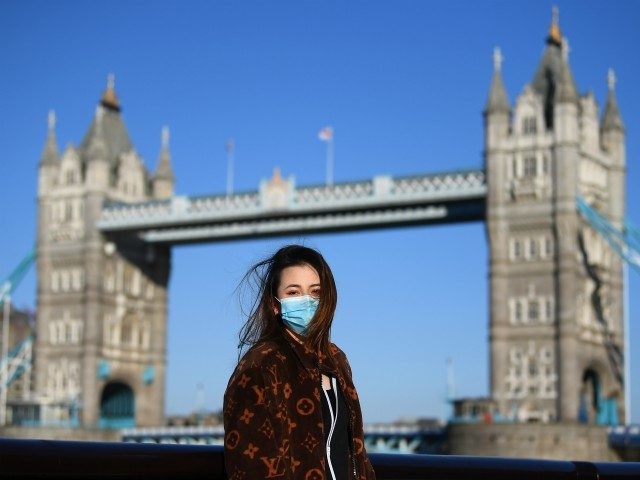A scientist on the British government’s committee that advises on coronavirus said the UK could be the worst-hit country out of any in Europe.
Sir Jeremy Farrar, a member of the Scientific Advisory Group for Emergencies (SAGE) committee, told the BBC’s Andrew Marr on Sunday that while he was hopeful over the rate of infection slowing down, he admitted the UK could be hit worse than virus hotspots Spain and Italy.
He said: “It is possible. The numbers in the UK continue to go up. I do hope that we are coming close to the number of new infections reducing and, in a week or two, the number of people needing hospitalisation reducing, and, tragically, the number of deaths plateauing and starting to come down.
“But, yes: the UK is likely to be certainly one of the worst, if not the worst affected, country in Europe.”
Globally, 1.78 million people have contracted the Chinese coronavirus, and 109,311 people have died, according to figures by Johns Hopkins University as of Sunday morning.
Italy has seen the highest number of deaths, 19,468, in the whole world. While Spain has the highest number of confirmed cases, 163,027, in Europe, coming only second in the world to the United States, which has 530,006 confirmed cases.
The UK has the fourth-highest number of deaths globally. With the UK’s total death toll hitting 9,875 on Saturday, it is highly likely that the UK will hit the 10,000 fatalities mark on Easter Sunday. With daily fatalities in the 900s for the past two days, it is possible the country could also reach the grim daily record of 1,000 fatalities from the Chinese virus.
EU Ventilator Scheme Has Produced No Machines, Claim UK Govt Turned Down 50k ‘False’ https://t.co/OKkYMIZAOH
— Breitbart London (@BreitbartLondon) April 9, 2020
Asked how Germany had managed to keep fatalities at a relatively low rate, Mr Farrar put it down to the country’s rigorous and widespread testing — an area in which the UK is falling behind — followed by isolation of positive cases which reduces transmission.
While he said that “testing buys you time”, he said, however: “It is my view that treatment and vaccines are our only true exit strategy from this.”
Sir Jeremy then gave a stark reminder that in pandemics, there may be multiple waves of mass infection, saying: “I think the chances of second and third waves of this epidemic are probably inevitable.”
The Spanish flu had three waves between the spring of 1918 and the summer of 1919, peaking during the second wave in autumn 1918.
“And therefore having the right treatments to save lives but also having a vaccine in the future is going to be absolutely critical to prevent those second and third waves,” he added.
UK: Daily Coronavirus Deaths Overtake Daily Records for Italy, Spain https://t.co/XECB14PkTa
— Breitbart London (@BreitbartLondon) April 10, 2020
Mr Farrar echoed estimations by University of Oxford professor Sarah Gilbert who said that the soonest a vaccine could be ready would be September. He said: “The vaccine, I think, will be available during the autumn of this year but that will not be at the scale required to vaccinate, maybe, billions of people around the world.”
Breaking down the stages for developing, testing, and manufacturing a vaccine for a new disease, the top scientist said the Oxford vaccine, for example, would be going into volunteer studies in the summer with the results available in September, and then a push that month to give to more people “to see that it’s not just safe, but effective”. In parallel, the manufacturing capacity would have to be increased.
That September date, however, would still just be the beginning of the inoculation timeframe, with Sir Jeremy saying: “That in its totality to vaccinate billions of people around the world, I hope we could get done in 12 months. That is, in itself, an unprecedented ambition.”
Coronavirus Vaccine May Be Developed by September, Says Oxford Professor https://t.co/Yccm74QB2g
— Breitbart London (@BreitbartLondon) April 11, 2020

COMMENTS
Please let us know if you're having issues with commenting.